Chrysler’s Stock Car Connection — Part 17
1968: Changing Gears–Fixing Charger as Dodge waxes and Plymouth wanes.
Story by Wm. R. LaDow Photos from the Nichels Engineering Archives
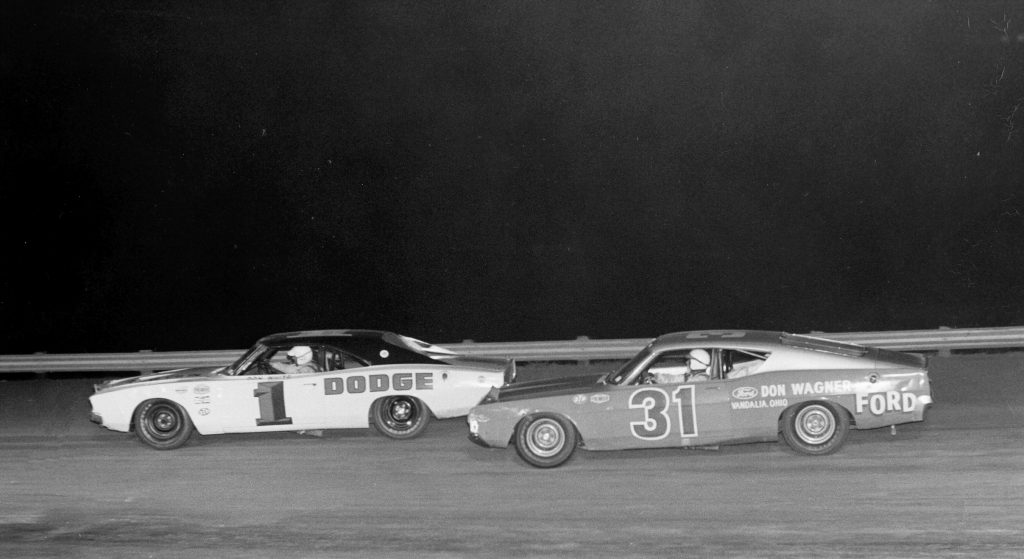
The staff at Nichels Engineering were now on full throttle. They would have to rely on Chrysler Engineering to design a solution to the Dodge Charger’s problems. The race season had begun and that meant supporting the entire stock car fleets in NASACAR, USAC, ARCA and IMCA.
Nichels Engineering would support the Paul Goldsmith’s entry in NASCAR for fifteen of the “money races.” Paul’s approach would be modified somewhat as it was obvious that Plymouth was not growing their involvement, but contracting it. Paul would continue to drive Plymouth products for the near term, but he knew his corporate future was with Dodge products.
Don White would concentrate on racing in USAC where he was defending his 1967 National Championship, participating in 17 races. Nichels Engineering would schedule White into NASCAR for only one more occasion in the 1968 season, the American 500 on October 27th at Rockingham.
Paul Goldsmith’s next two races after Daytona, Bristol and Atlanta did nothing to bolster the attitudes of Nichels Engineering. Paul lost a driveshaft at Bristol finishing 34th and handling problems put him out of contention at Atlanta. He ran a total of 60 and 48 laps out of possible 500 and 334 as the start of the season didn’t get any better. At North Wilkesboro, after he led 27 laps, he blew an engine on the 144th lap and finished 27th. Sadly it was his best finish since his sixth place at Daytona.
In his next race, at Martinsville, Paul got behind the wheel of another Plymouth, this one being the No. 14 Tom Friedkin Plymouth that was wrenched by Bill Ellis. Goldy’s luck was no better, finishing 35th out of 40 entries by virtue of a crash. It was very last time that Paul Goldsmith would pilot a Plymouth in his racing career.
If there was any good news, it was the Chrysler was still holding its own. NASCAR’s point leader on the season was former Nichels driver Bobby Isaac, driving terrifically for K&K Insurance in their 1967 Dodge Charger. As always, Plymouth, as a brand, was being led by Richard Petty in the No. 43 car.
As the NASCAR season progressed, it was becoming quite clear that the move by Goldsmith to leave Plymouth and begin driving a 1968 Dodge, was just the tip of the iceberg for a race season of discontent amongst what was becoming a very unhappy Plymouth racing contingent.
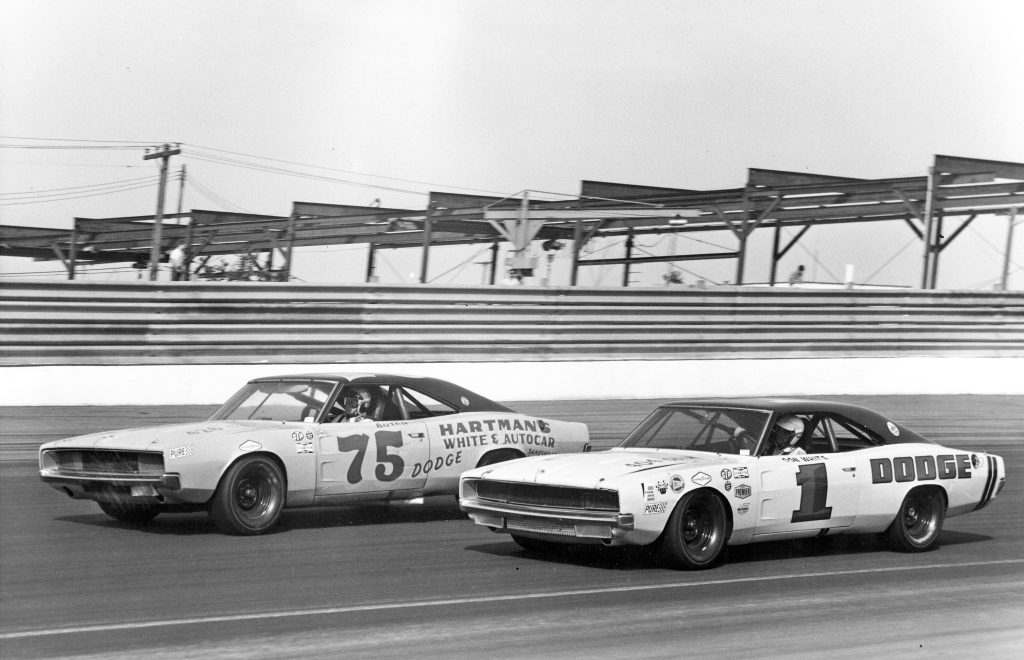
Goldsmith debuted his No. 99 Dodge Super Bee at Darlington on May 11th in the Rebel 400. The results were not what anyone at Nichels Engineering had hoped for. Paul, who had qualified 16th, led only 2 laps and finished 24th after losing his engine on lap 182.
Though Nichels had hoped for better, it certainly wasn’t an ideal situation. If Paul had gone out and won the race, every unhappy Plymouth driver in the Chrysler ranks would have demanded an immediate conversion to Dodge equipment. The situation was becoming untenable. Goldsmith, a company man through and through, publicly stated that “Chrysler people have got to stop singing songs (in reference to the latest Chrysler commercials featuring music) and start designing some parts that will get the job done.”
Ray Nichels was becoming increasingly concerned fielding calls from Plymouth teams who wanted to know why key racing parts were being back-ordered or unavailable. Nichels let it be known in no uncertain terms that the Plymouth division failed to sense the urgency of its race team’s lack of performance based on engine technology that was several years old and chassis development that seem non-existent. Whenever Nichels broached the subject back in Detroit, the response he got from Plymouth, was always, “We don’t need to change anything, and we’ve got Petty. We are the defending NASCAR champs.
By this time in the NASCAR season, FoMoCo had won 12 of the first 17 Grand National races. To date they had won every superspeedway race and every road course race.
The news wasn’t much better in USAC.
The USAC Stock Car season started in early May to coincide with the race schedule of the Indianapolis 500 Month of May. A.J. Foyt was the victor in the May 5th contest at the Indianapolis Raceway Park road course driving a Jack Bowsher prepared Ford Torino. Foyt started 26th and won going away in record time. Al Unser was the pole sitter, but was nowhere to be found at the checkered flag. Nichels Engineering’s defending 1967 USAC Champion was out after four laps due to mechanical troubles.
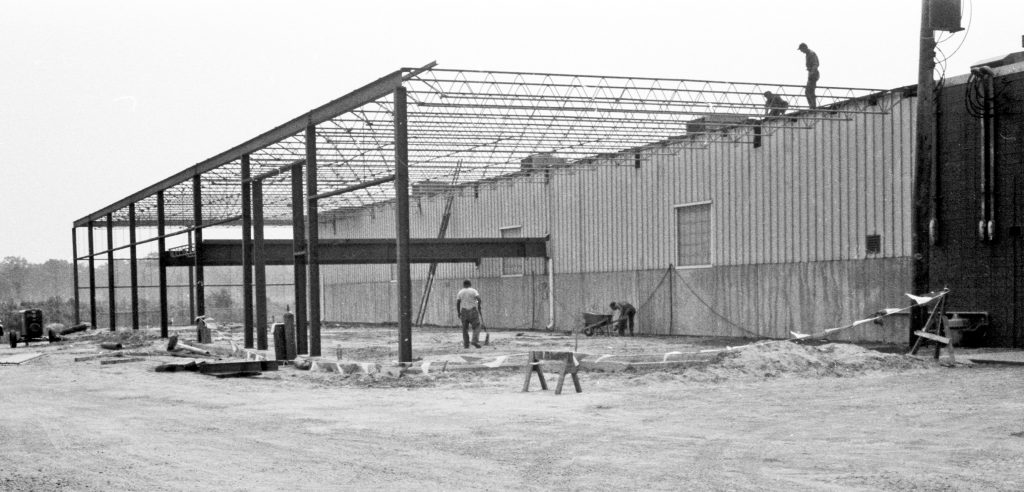
On Sunday, May 26th, Paul Goldsmith took another shot at reviving his winning ways. Still substantially suffering the aches and pains generated by his crash at Riverside in late December, Paul tackled the longest race of the NASCAR season, the World 600. Qualifying 11th. It appeared that crew chief Mack Howard was beginning to gain some insight into the setup of Paul’s new mount, the ’68 Dodge Super Bee. After 91 laps though, the setup couldn’t overcome the failure of another engine, as Goldsmith finished 41st on the day.
If there was any good news at the Charlotte Motor Speedway though, it was race win by Ray Fox’s No. 3 Dodge Charger piloted by Buddy Baker. Though the race was rain-shortened and finished with all-time record low speed of 104.207 mph, it was a victory for Dodge and Chrysler
As Chrysler continued in its woeful efforts to become competitive again, the month of June brought very encouraging news. Dodge’s engineering staff, realizing the design flaws of the 1968 Dodge Charger, went back to the proverbial drawing board and came up with a handful of solutions. After the revelations of the aero design issues at Daytona, it took just 3 months for Dodge Engineering to make some key improvements. A grille designed for a Dodge Coronet was set flush on the nose of a ’68 Charger. The rear window was re-designed as a sloped fastback. The result was the creation of the 1969 Dodge Charger 500. Removal of the front end air pocket and the smoothing out of the rear window made the new design much more aerodynamic and Dodge would insure that they would be ready for the start of the 1969 stock car season.
Two weeks later, progress seemed apparent with Goldy’s ’68 Dodge as he qualified fourth for the Carolina 500 at Rockingham. With a record-breaking track temperature of 145 degrees, Paul led 52 laps of his 201 lap ride, pushing his car relentlessly ‘til an idler arm gave way and ended his day. It was another speedway win for Ford with Donnie Allison in his Banjo Matthews car dominating the field.
More good Chrysler news on the day was that Bobby Isaac continued his assault on NASCAR’s point’s championship by extending his lead 83 points over Holman-Moody’s David Pearson and his ’68 Ford Torino.
It was during this time, off the track, some very closely held information began to surface. Ronney Householder had been struggling with his health for some time. Ray Nichels (a close family friend of Householders since 1939) and Paul Goldsmith were privy to the depth of Ronney’s illness and did their best to keep the matter confidential. It was finally published in Chris Economaki’s June 19th “from the Editor’s Notebook” column, that Ronney had undergone surgery for lung cancer. In the midst of the rapidly changing (some would say deteriorating) corporate climate at Chrysler, the key link between Chrysler Corporation and its racing enterprises was unable to fulfill the travel and business demands of his role with the company. This situation would prove to have long lasting effects over the entire Chrysler racing efforts.
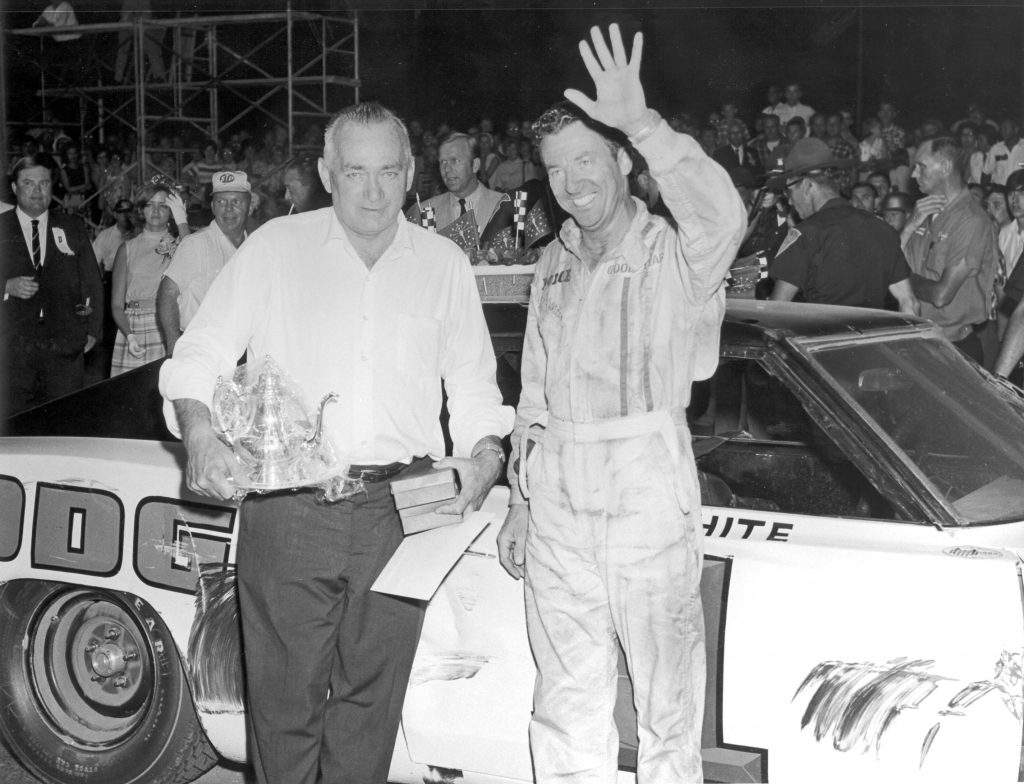
As the racing season progressed, another Jack Bowsher car won again in USAC, taking two victories in the split sessions at New Bremen, Ohio. Dodge and Plymouth ended up on the podium with solid showings by Al Unser and Norm Nelson.
Don White and his Nichels Engineering ’68 Dodge broke through for his second win of the season, this one at the Indiana Fairgrounds on June 22nd. Dodge Chargers swept the podium for the first time in 1968 as Al Unser and Butch Hartman finished second and third respectively. After a yellow flag, White took the lead from Al Unser on the 99th lap and held on to the win. Many in the crowd thought White jumped the start (including Unser), and made their opinions known throughout the trophy presentation. Unser’s car owner, Rudy Hoerr, chose not to protest, but that didn’t appease many in the crowd.
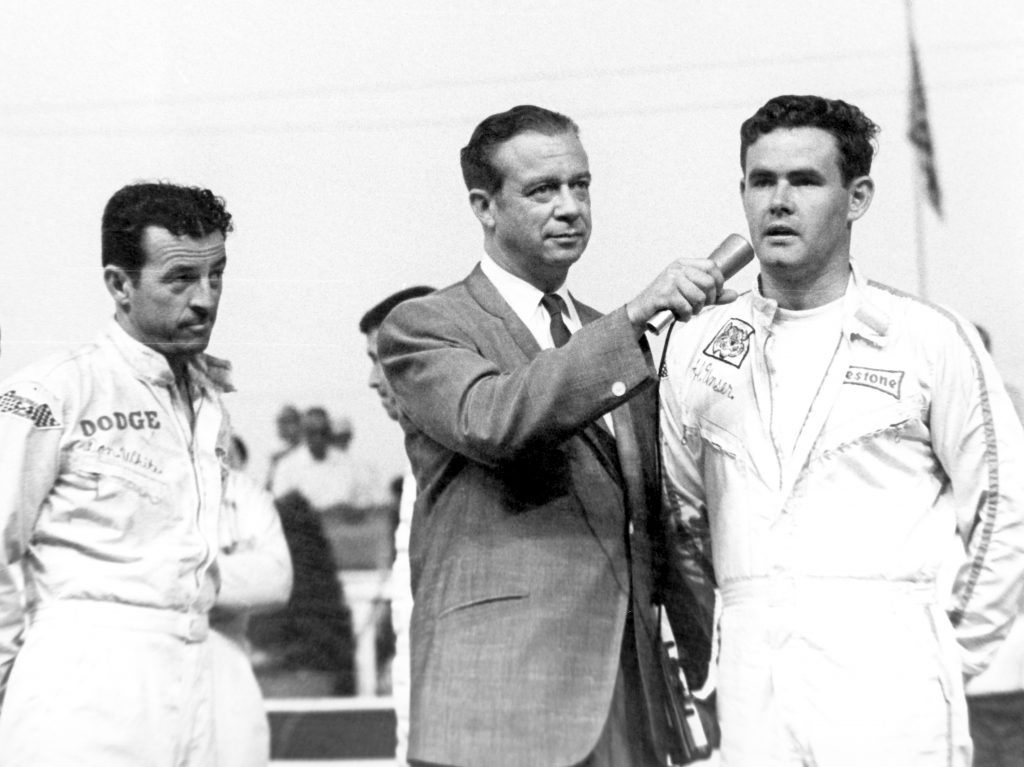
Next on the race agenda was the mid-point of the season; the Firecracker 400 at Daytona. Nichels Engineering, a two-time winner of the event (1964, 1966) was looking for a breakthrough performance from Paul Goldsmith and they got it. Paul was able to work his way through traffic and finish the race running for the first time in 1968. Unfortunately, FoMoCo products once again dominated the racing and the cries all the way back to Chrysler corporate continued to get louder. Plymouth car owners and drivers wanted more consideration to moving to Dodge products and the Dodge car owners and drivers wanted more corporate commitments for increased funding. In the meantime, drivers like Cale Yarborough just kept cashing the checks from the winnings.

